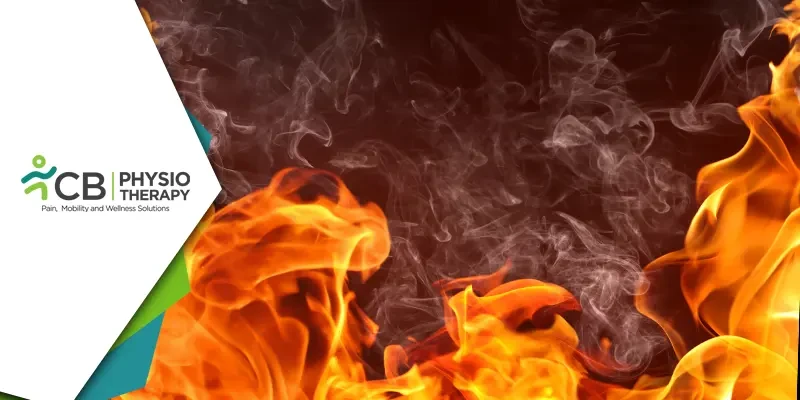Burn injuries can have devastating consequences, and third-degree burns are the most severe type of burn injury. Third-degree burns affect all layers of the skin and underlying tissues and can cause permanent damage to the skin and muscles. Physiotherapy plays a crucial role in the management and rehabilitation of third-degree burn patients. In this blog, we will discuss how physiotherapy helps third-degree burn patients and the various techniques and approaches used by physiotherapists to facilitate recovery.
Burns
A third-degree burn is the most severe type of burn injury, characterized by damage to all layers of the skin and underlying tissues, including the muscle and bone. This type of burn can cause permanent damage and scarring and can be life-threatening if a large area of the body is affected.
Third-degree burns typically occur as a result of exposure to a heat source, such as flames, hot liquids, steam, or contact with hot objects. Electrical burns, exposure to chemicals, and radiation can also cause third-degree burns.
The severity of a burn injury is determined by the extent and depth of the burn. Third-degree burns involve the full thickness of the skin and are often white, brown, or charred. The affected area may be numb due to the destruction of the nerves and blood vessels.
Third-degree burns can be caused by prolonged exposure to a heat source, such as a house fire, or a shorter duration of exposure to high heat, such as touching a hot stove or coming into contact with a chemical agent. Treatment for third-degree burns typically requires hospitalization, wound care, and rehabilitation to promote healing and restore function. Physiotherapist plays a vital role in managing a burn patient. The physiotherapy management for third-degree burn includes:
Wound Care:
Third-degree burns require immediate and ongoing wound care to prevent infection and promote healing. Physiotherapists work with burn patients to clean and dress wounds, monitor for infection, and provide pain management techniques to reduce pain and discomfort.
Scar Management:
Third-degree burns can cause significant scarring, which can affect a patient's function and appearance. Physiotherapists work with patients to manage scars through massage, exercise, and other techniques designed to improve scar mobility and reduce its appearance.
Pain Management:
Third-degree burns can cause severe pain, which can be debilitating for patients. Physiotherapists can provide pain management techniques, including manual therapy, massage, and exercises, to reduce pain and discomfort.
Range of Motion and Joint Mobility:
Third-degree burns can cause significant scar tissue formation, which can limit joint mobility and cause pain. Physiotherapists work with burn patients to prevent or reduce the formation of scar tissue and improve joint mobility through exercises and stretches. They may also use manual therapy techniques to break down scar tissue and improve the range of motion.
Strengthening and Endurance:
Third-degree burns can cause significant muscle weakness, and physiotherapists work with patients to improve their strength and endurance through exercises and activities designed to build muscle and improve cardiovascular function.
Respiratory Therapy:
Third-degree burns can affect the respiratory system, and patients may require respiratory therapy to improve lung function. Physiotherapists can provide breathing exercises and airway clearance techniques to help burn patients breathe more effectively and reduce the risk of respiratory complications.
Rehabilitation and Functional Restoration:
Third-degree burns can cause significant functional impairments, and physiotherapists play a vital role in rehabilitating patients and restoring their function. They develop individualized rehabilitation programs that include exercises and activities designed to improve strength, endurance, balance, and coordination.
Psychological Support:
Third-degree burns can have a significant impact on a patient's mental health, causing anxiety, depression, and post-traumatic stress disorder (PTSD). Physiotherapists can provide psychological support and counseling to help patients cope with the emotional and psychological aspects of their injury.
Physiotherapy helps third-degree burn patients by managing wound care, scar management, pain management, improving joint mobility, promoting healing, improving strength and endurance, providing respiratory therapy, rehabilitating patients to restore function, and providing psychological support. By working closely with third-degree burn patients, physiotherapists can help them recover physically and emotionally from their injuries and regain their independence and quality of life.

